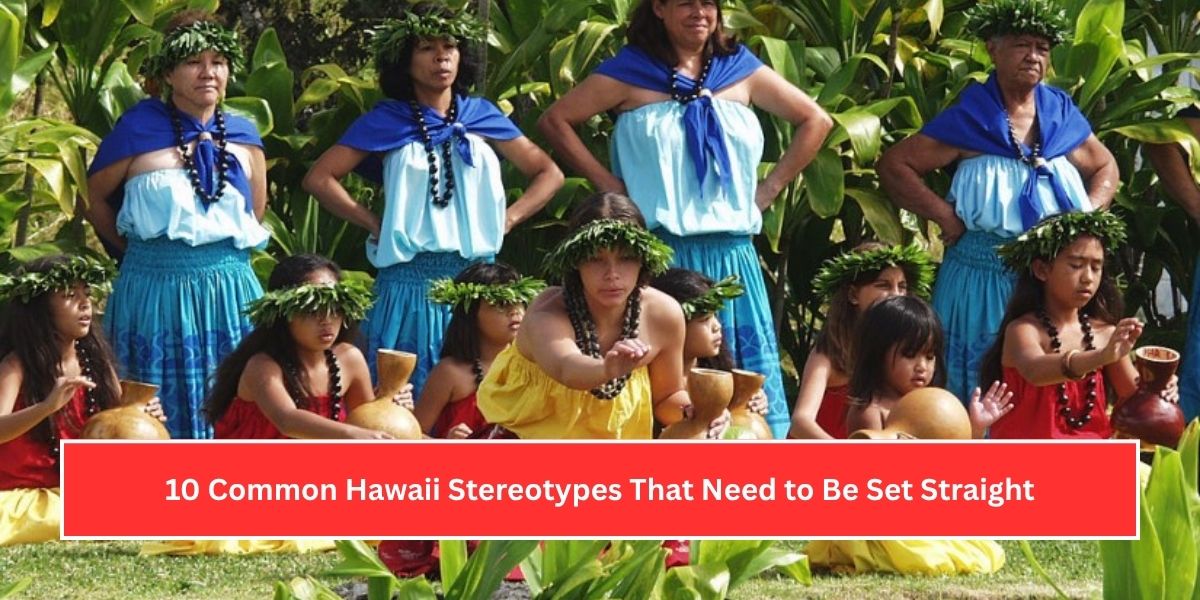Hawaii often finds itself at the center of dreamy tropical depictions, but many of the ideas people have about the islands are outdated or simply untrue. These stereotypes not only misrepresent the real lives of Hawaii’s people but also oversimplify a vibrant and complex culture. Here are ten Hawaii myths that deserve to be debunked.
1. Everyone Lives on the Beach in Grass Huts
While the thought of grass huts and beachside living fits into vacation fantasies, it doesn’t reflect reality. Hawaii is a modern U.S. state with bustling cities, contemporary architecture, and varied housing. Honolulu is home to high-rises, busy streets, and shopping malls—not grass shacks.
2. It’s Always Sunny and Perfect Weather
Although Hawaii enjoys mild temperatures year-round, it’s not all sunshine. Rain is frequent, especially on islands like Kauai, which is among the wettest places on earth. Even Honolulu experiences rainfall on more than 150 days each year.
3. Native Hawaiians are just any Hawaii Residents
Being a Native Hawaiian is about ancestry—it refers to the Indigenous Polynesian people who originally settled the islands. Not everyone who lives in Hawaii is Native Hawaiian. The population is ethnically diverse, including people of Asian, Caucasian, and Pacific Islander descent.
4. Everyone can Surf and Loves Water Sports
Surfing holds cultural and historical significance in Hawaii, but that doesn’t mean every resident surfs or spends their time in the ocean. Interests vary, just like anywhere else, and many locals prefer hiking, community events, or indoor activities.
5. The Aloha Spirit and Hula are for Tourists Only
The aloha spirit is not a tourist gimmick—it is a deeply rooted philosophy centered on love, respect, and community. Likewise, hula is not just performance art for hotel guests; it is a sacred tradition used to preserve and pass down stories, history, and values.
6. Hawaii Grows the Most Pineapples in the World
While pineapples were once a dominant crop in Hawaii, global production has shifted elsewhere. Today, Hawaii’s pineapple output is less than 2% of the world’s supply. The state’s agricultural industry is much broader, including crops like coffee, macadamia nuts, and tropical flowers.
7. Waikiki and Maui are the only Worthwhile Destinations
Though popular, Waikiki and Maui are just two of the eight main Hawaiian islands. Others like Molokai, Lanai, Kauai, and the Big Island offer rich experiences, from volcanic landscapes to tranquil rural escapes. Each island holds its own distinct character and charm.
8. Hawaiian Culture is Simple or Homogenous
Hawaiian culture is anything but simple. It blends ancient Polynesian roots with influences from Japanese, Filipino, Chinese, Portuguese, and other immigrant communities. Its music, language, cuisine, and spirituality are layered, evolving, and profoundly meaningful.
9. Everyone Looks “Hawaiian” and There’s a Certain Way to Be Hawaiian
There’s no single Hawaiian “look.” The state has one of the most ethnically mixed populations in the world. Assuming someone must look a certain way to be Hawaiian disregards the islands’ unique multicultural identity and history.
10. Local Life Is Just “Paradise”—No Problems
Beyond the scenic views, Hawaii faces real social, economic, and political issues. The high cost of living, limited housing, environmental concerns, and the ongoing impact of colonization—especially on Native Hawaiians—are serious challenges that shape daily life.
Understanding the truth behind these stereotypes helps create a more respectful and informed appreciation of Hawaii. Real island life is rich in tradition, diversity, and complexity—far beyond the postcards and tourist brochures.




